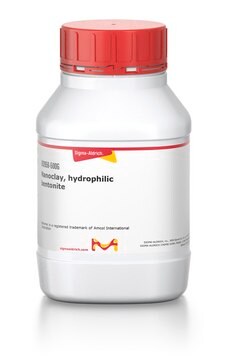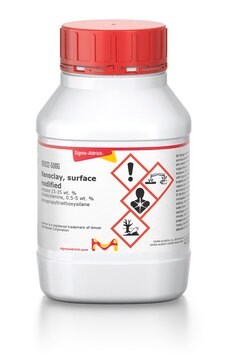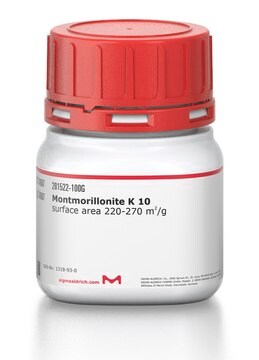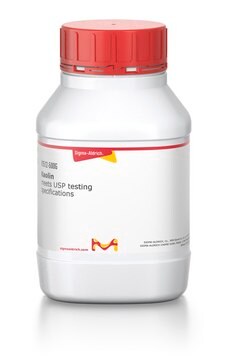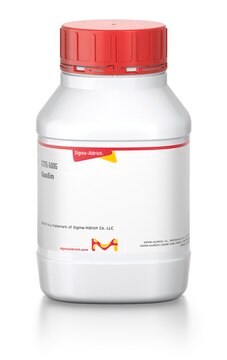285234
Bentonite
Synonyme(s) :
Montmorillonite
About This Item
Produits recommandés
Forme
powder
Température de stockage
room temp
Chaîne SMILES
O.O=[Si]=O.O=[Si]=O.O=[Si]=O.O=[Si]=O.O=[Al]O[Al]=O
Vous recherchez des produits similaires ? Visite Guide de comparaison des produits
Description générale
The swelling property of bentonite is used to produce viscous water suspensions for bonding, plasticizing, and suspending applications. The presence of a large surface area of bentonite is due to the colloidal dispersion of the particles is the main reason for its application as an insecticide carrier, an emulsifier, and an emulsion stabilizer.
Application
- Optimization of Cd (II) removal from aqueous solution by natural hydroxyapatite/bentonite composite using response surface methodology.: This study explores the use of a hydroxyapatite/bentonite composite for the efficient removal of cadmium ions from aqueous solutions, highlighting its potential application in environmental remediation (Desalegn et al., 2023).
- Acid-activated Sodium Bentonite and Kaolin Clay: Comparative Study by Physicochemical Properties.: This research compares the physicochemical properties of acid-activated sodium bentonite and kaolin clay, focusing on their potential applications in various industrial processes and environmental treatments (Kumar & Lingfa, 2020).
- Photochemical synthesis of silver nanoparticles on chitosans/montmorillonite nanocomposite films and antibacterial activity.: The research focuses on the synthesis of silver nanoparticles on chitosan/montmorillonite nanocomposite films and their enhanced antibacterial activity, suggesting potential applications in medical and environmental fields (Gabriel et al., 2017).
Code de la classe de stockage
11 - Combustible Solids
Classe de danger pour l'eau (WGK)
WGK 3
Point d'éclair (°F)
Not applicable
Point d'éclair (°C)
Not applicable
Certificats d'analyse (COA)
Recherchez un Certificats d'analyse (COA) en saisissant le numéro de lot du produit. Les numéros de lot figurent sur l'étiquette du produit après les mots "Lot" ou "Batch".
Déjà en possession de ce produit ?
Retrouvez la documentation relative aux produits que vous avez récemment achetés dans la Bibliothèque de documents.
Notre équipe de scientifiques dispose d'une expérience dans tous les secteurs de la recherche, notamment en sciences de la vie, science des matériaux, synthèse chimique, chromatographie, analyse et dans de nombreux autres domaines..
Contacter notre Service technique